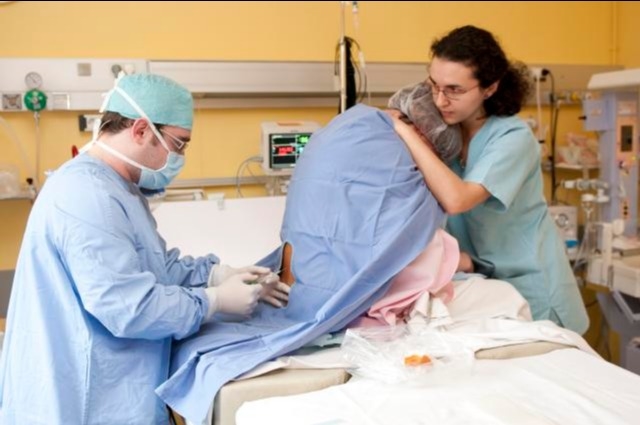
Going in for labour with epidural anaesthesia? Know your facts here!
18 Feb 2016 | 4 min Read
Rahul Manchanda
Author | 4 Articles
Dr Rahul Manchanda explains what it means to take epidural anaesthesia during childbirth via labour.
Epidural anaesthesia:
It is the most popular method of pain relief during labour. It is a type of regional anaesthesia that blocks nerve impulses from the lower spinal segments, resulting in decreased pain sensation in the lower half of the body.
Benefits of epidural anaesthesia:
- Superior pain relief than other painkillers.
- Allows the mother to rest if labour is prolonged.
- By reducing the discomfort of childbirth, mother has a more positive birth experience.
- Allows the mother to remain alert and be an active participant during the process of childbirth.
- If emergency caesarean section is to be done, no need to give separate anaesthesia and even provides effective pain relief during postoperative period.
Risks of epidural anaesthesia:
To mother:
- Sudden drop in blood pressure.
- Severe headache due to leakage of spinal fluid. Seen in less than 1% of women.
- Side effects: itching, fever, shivering, ringing of the ears, backache, soreness, nausea, difficulty in urination.
- Difficulty in walking.
- Prolong duration of labour (second stage of labour).
- Increased risk of instrumental delivery and caesarean rate.
- After delivery, numbness is felt in lower half of body for few hours.
- In rare instances, epidural site infection, hematoma, permanent nerve damage can occur.
To babies:
- The medications used in epidural anaesthesia are known to cause respiratory depression and decreased fetal heart rate in newborns.
- Fetus might become lethargic and have trouble getting into position for delivery, leading to malpositions and malpresentations.
- In some babies, may lead to difficulty in initiation in breastfeeding.
How is epidural anaesthesia given to the mother
Placement of an epidural catheter results in minimal discomfort. It takes about 10 minutes only. Patient is placed in sitting position or lateral lying down position. As the epidural needle is placed, just a brief sting on the skin is felt. After this, catheter is introduced and patient only feels the tape on her back that keeps the tubing in place.
The numbness effect starts within few minutes of initial dose of anaesthetic agent. The entire numbing effect comes after 10-20 minutes. As the anaesthetic dose begins to wear off, more doses will be given, usually every one to two hours.
Typically epidurals are placed when woman is in true active labour i.e. cervix is dilated to 4-5 centimetres.
Effectivity:
A major number of women feel relieved from the pain after taking in epidural. The contractions feel less strong and easier to manage. Some pressure might be felt in the rectum and in the vagina later in labour. Being totally numb during labour is undesirable because patient needs to know when and where to push at the end of labour. Occasionally (5%), pain relief is one-sided or patchy. If this happens, the anaesthesiologist will help by giving extra doses or changing the patient position or the catheter position. If it still does not work, the procedure has to be repeated (by placing the epidural catheter again).
When epidural must not be given:
- To Heart disease patient, on blood thinners.
- Low platelet counts
- Patient with heavy bleeding or in shock
- Infection at back
- Have a blood infection
- Neurological disease
- History of back surgery.
Hence, Epidural Analgesia or Anaesthesia is one of the most popular techniques of painless delivery used by women during labour. The technique is not only cost-effective, but also gives relief from unbearable labour pain during deliveries.
Also read more about: Interview with Dr Rahul Manchanda: Must-knows facts about Breast Cancer, Q&A with Dr Rahul Manchanda: Decoding Infertility in young couples
Source for banner image: pregnancy.about.com
A


Related Topics for you
Suggestions offered by doctors on BabyChakra are of advisory nature i.e., for educational and informational purposes only. Content posted on, created for, or compiled by BabyChakra is not intended or designed to replace your doctor's independent judgment about any symptom, condition, or the appropriateness or risks of a procedure or treatment for a given person.
